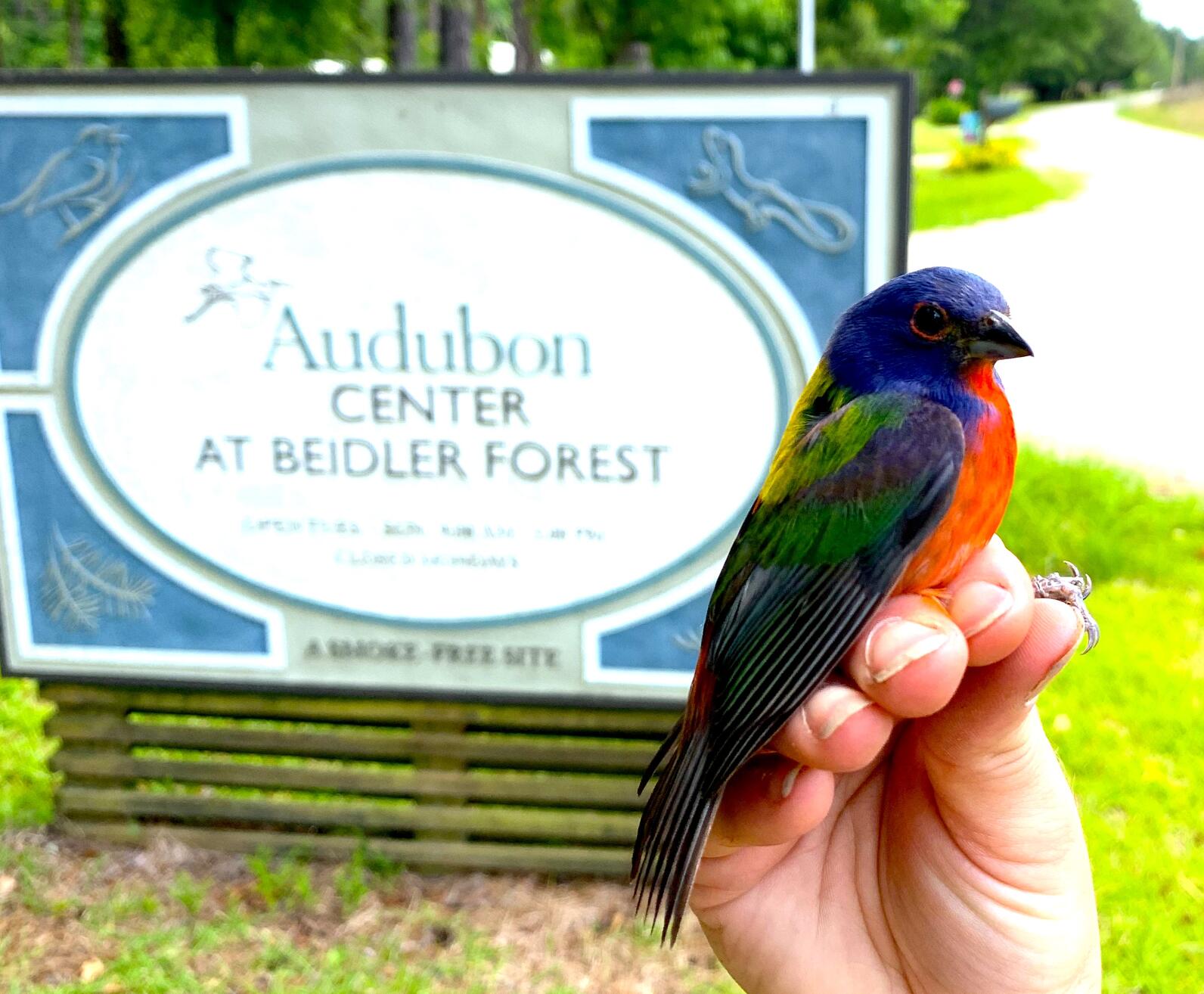Whether it’s modeling to identify South Carolina’s most valuable habitat to restore and protect, conducting massive community science projects like the Christmas Bird Count and Great Backyard Bird Count to validate and refine our research, or bird banding work in support of National Audubon’s Migratory Bird Initiative, we’re using the power of science to better understand and meet the needs of South Carolina’s birds.

Program Highlight
In partnership with the South Carolina Department of Natural Resources, the National Park Service, South Carolina State Parks, Audubon Chapters and Bird-Friendly Communities – and thanks in part to generous support from the Duke Energy Foundation and Dominion Energy Charitable Foundation – we are making excellent progress on building a comprehensive network of Motus Wildlife Tracking towers across the state.
Using coordinated automated radio telemetry arrays, these towers allow us to study the movement of birds and other small animals and insects in real-time, without the time and expense required to place and recapture geolocator units. This results in a better understanding of the full life cycles of imperiled migratory bird species, using a cooperative scientific approach – while creating a pathway to engage and educate new communities in bird conservation efforts.
Through the collaborative network of towers, researchers have been able to follow Painted Bunting migration along the coast of South Carolina – giving us a better understanding of their seasonal movements and timing. The Audubon South Carolina network of towers has detected almost 200 tags from birds that all have their own incredible journey logged through this extensive project. We can’t wait to share details from the research with you!




